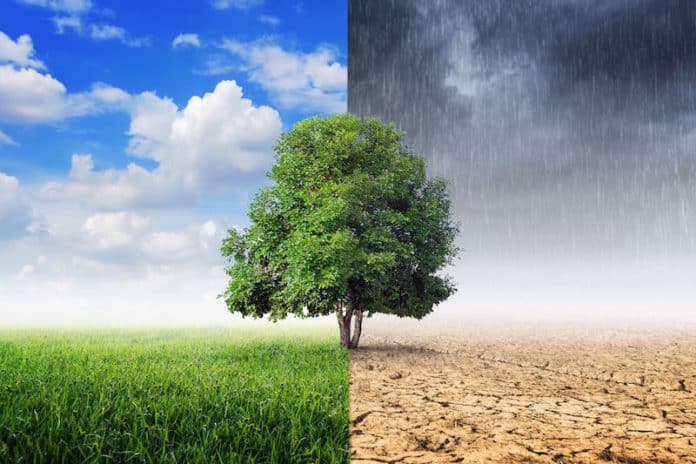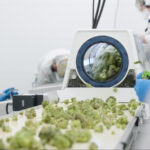It’s all about the green. As a professional in the cannabis space, I want to believe that means mastering the craft of growing premium flower. And it is, at the root. But I’ve been around the cannabis block. (Last year alone, I walked, worked, or spoke at twenty-eight cannabis industry events and trade shows around the world.)
I know the talk of happy stakeholders, future investors, return customers, and cannabis regulators drives today’s cannabis business conversations. There are many more people to answer to and to please.
Increasing profits isn’t necessarily at odds with staying true to craft. Cultivators can accomplish both by preventing evaporation of terpenes and moisture weight in cannabis. Turns out, there’s a hefty revenue source disappearing into thin air along with the terpenes and moisture weight.
Whether for medical or recreational use, growers invest a tremendous amount of time, effort, and money in cultivating fine cannabis. But even the best grower knows growing is only half the job. The other half happens after harvest. While attending the Reno Cannabis Convention, I sat on a “living soil” panel of experts. The group agreed proper curing, aging, and storing optimizes every bud. Managing moisture loss post-harvest affects the quality of the final product and adds to a cultivator’s bottom line.
However, much of the cultivation world continues snapping stems and pinching buds to measure moisture content. Addressing water weight and relative humidity (RH) can be touchy. Not stepping on the craft here, just showing that lost moisture costs flower companies money. Big money.
How much moisture is in cannabis?
On average, 12 percent of cannabis biomass is moisture. Consequently, when that moisture evaporates, the potential for overall weight loss may be as much as 12 percent. Depending on how buds are stored, their total moisture begins to dissipate. As that happens, the overall weight of each pound drops.
Calculating revenue lost to evaporation
Let’s say a grower just pulled down a crop containing 1,000 pounds of buds. Then for a week, the producer dried and cured the flower at about 50-percent RH. Good to go, right?
Not really. Without long-term humidity control, the flower is still at risk. The second unprotected flower leaves a cultivator’s hands for transport, moisture—and money—start to evaporate.
So how much can flower dry out while in inventory or transit? A lot, and it costs cultivators plenty. Even if the cured cannabis loses only 5 percent of its water weight before the crop is weighed, some serious dollars are at stake. One thousand pounds of cannabis contains 120 pounds of water weight. So, a 5-percent decrease in water weight equals six pounds of flower that evaporate into the air.
If a 5-percent loss sounds insignificant, remember agriculture is a game of millions of pennies. If a cultivator sells flower for $1,100 per pound at wholesale, then $6,600 vanishes from the bottom line with every 1,000 pounds of cannabis sold. For a vertically integrated company, the loss easily can reach $15,000 or more if the retail price is $5 per gram, for example.
When netting out the cost of growing precious pounds, that’s a chunk of change. For large-scale cultivators and licensed processors in a market like Canada, a cannabis behemoth can produce more than 500,000 pounds annually. That’s millions of dollars in lost revenue. Ouch.
Not just a cultivator’s problem
Evaporation isn’t just a producer’s problem; it also may occur farther down the logistics chain. Moisture loss can happen while product is in transit to distributors, at packaging facilities, and on the shelf at retailers.
How dry is too dry? Boveda conducted field tests in several legal markets throughout Arizona, California, Colorado, Oregon, and Washington. Flower purchased in the dispensaries that were part of the test measured anywhere from 41-percent to 52-percent relative humidity. Many eighths were not eighths at all; they were sold underweight due to moisture loss. That unintentionally cheats consumers. Who wants to pay a retail price of up to $70 post-tax for 3.5 grams of top-shelf that turns out to be only 3.15 grams? That consumer was shorted $7 for .35 grams of product lost to water weight evaporation.
To offset evaporation, many producers overfill bins, bags, packages, and jars. That means cultivators are giving away product and losing money to evaporation. That’s a lose/lose.
Reversing the problem
Cultivators may use moisture-control products to reverse evaporation and capture lost revenue, plus earn even more per pound. Here’s how:
The sweet spot for curing and storing is 55-percent to 65-percent relative humidity. The range is based on recommended water activity (aW) levels established by ASTM International standards. ASTM develops and publishes voluntary consensus technical standards.
So, if flower is sitting at 50-percent RH, the cultivator must raise the humidity level by 10 percent to 15 percent to be in the optimal range. Using a two-way humidity control product will do this quickly and safely. Maintaining a relative humidity that’s optimal for keeping cannabis fresh increases the overall economic value of the harvest.
Here’s the math: If a cultivator brings a crop from 50-percent humidity up to 62 percent, that 12-percent increase in moisture will yield an increase of twenty-one pounds of flower. At a $5-per-gram retail price, that’s an extra $48,000 in revenue.
(BovedaInc.com provides a return-on-investment calculator that allows producers to plug in their own numbers to see how much more money they might earn by employing moisture control.)
Intentionally over-drying
Some cultivators use evaporation to increase THC ratios, lower tax liability, or avoid mold recalls. Manipulating cannabis weight for short-term gains, however, actually may cost more in the long run. Is increasing THC ratios or lowering tax liability worth $15,000 per 1,000 pounds of harvested flower? Probably not.
No doubt mold recalls are costly to both the bottom line and a brand’s reputation. But over-drying flower to an unreasonably low moisture level to avoid mold is not necessary when properly using two-way humidity control. From curing to storage to distributing to packaging to retail, evaporation kills unprotected cannabis slowly. Think death by a thousand cuts.
Remember, if cannabis is cured and stored:
4 Below 55-percent RH, the integrity of the biomass is compromised, trichomes become fragile and break, and terpenes evaporate.
4 Over 65-percent RH, it’s in the danger zone where mold can thrive and destroy a harvest.
Evaporation costs consumers
Consumers arguably care most about quality, consistency, effects and, to some extent, potency. I consider myself a cannoisseur, of sorts, so I believe I can say with some certainty that finding the highest THC is not most consumers’ primary goal.
Using cannabis relieves the ankle and knee pain I experience thanks to years of swimming, water skiing, and running cross country. As a medical consumer, I focus on quality and how well a strain addresses my specific ailments.
I’ve found that flower under 40-percent relative humidity is brittle and easily damaged. Damage to trichomes and subsequent terpene loss hinders the entourage effect created by ingesting all terpenes and cannabinoids together.
I also find consuming dry weed unpleasant. Excessively dry weed is very harsh when it’s consumed in more traditional fashions. (Think joints, chillums, and pipes vs. water pipes, bubblers, or water bongs). Dry flower also burns hotter, faster, and less consistently. A common outcome is canoeing or tunneling of the joint, spliff, or blunt. What consumer wants any of that? Not me.
Cultivators don’t deliberately disappoint their customers by peddling dry product. Rather, foregoing humidity control is more a sin of omission.
Future harvest, future benefits
The future benefit of maintaining well-hydrated cannabis is pleased, sated consumers who remain loyal to a brand. The current financial benefit of preventing moisture loss in the next harvest? Well, that’s all about the green—the cash kind.











